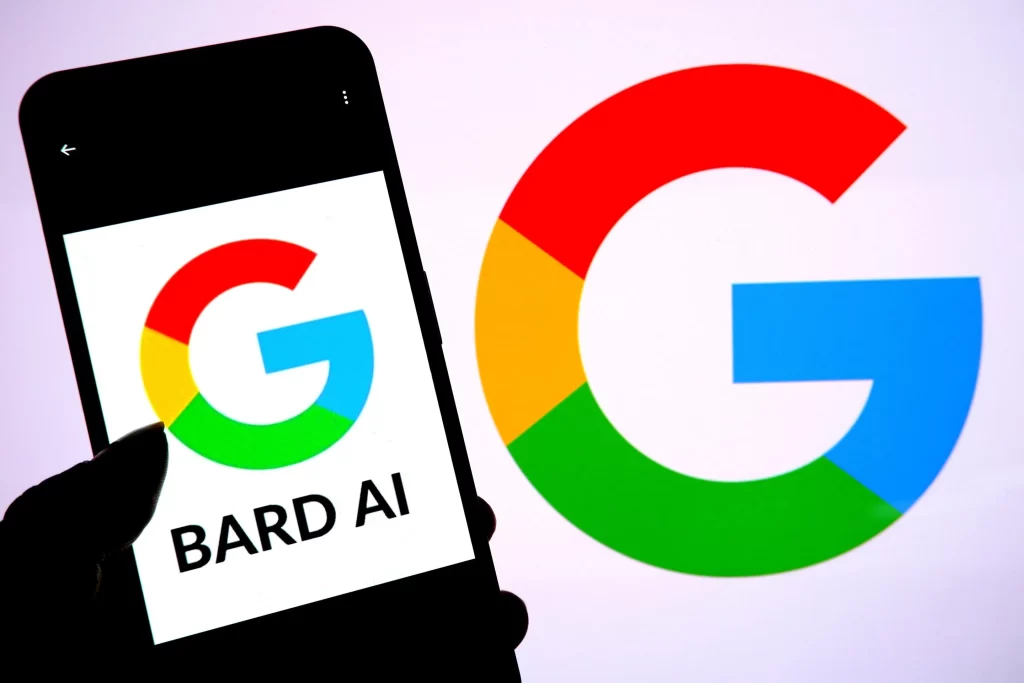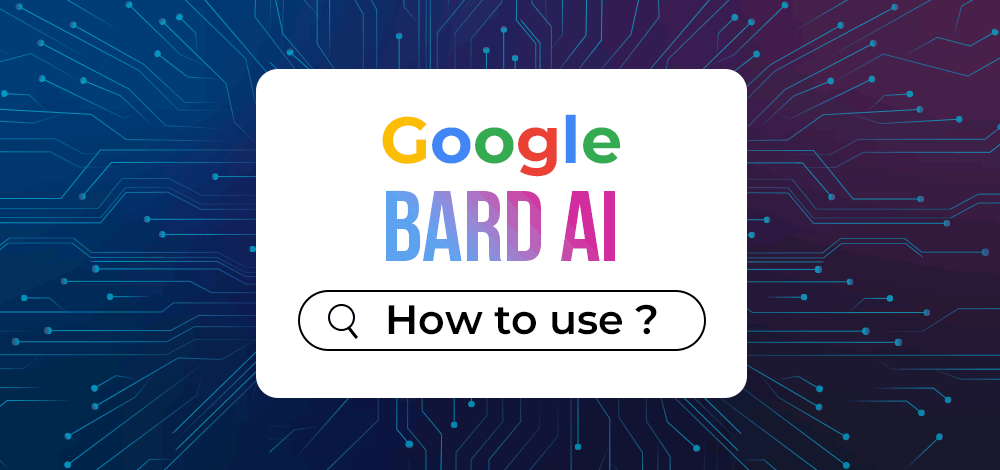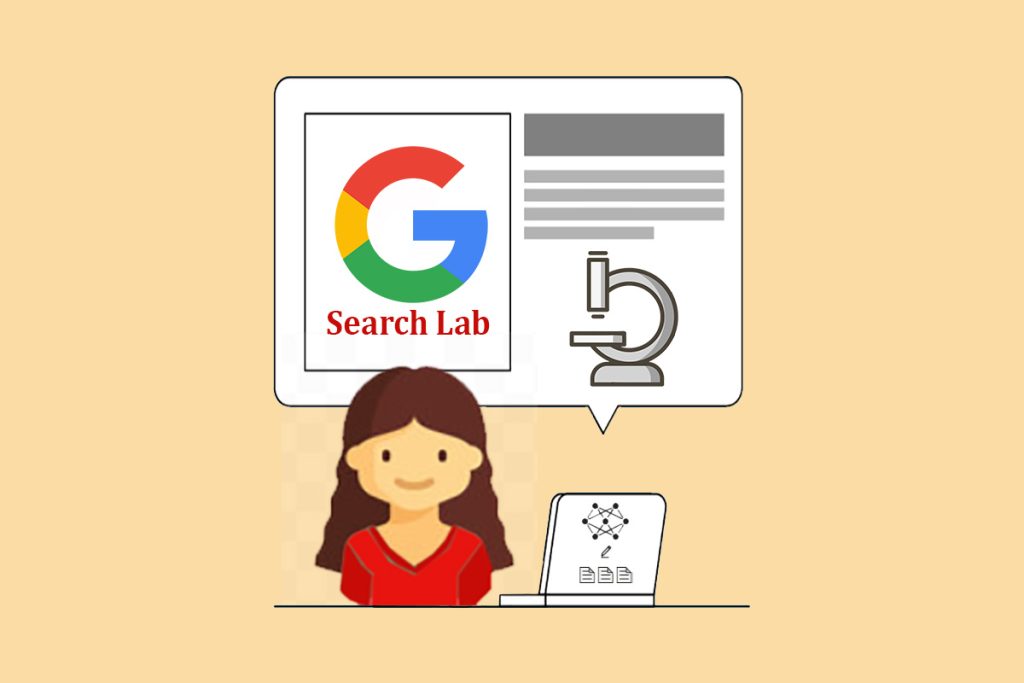
Hey all,
In this Tutorial, I will let you know about the best large language model BARD AI.
In the contemporary digital era, Google has fundamentally transformed the manner in which we seek information. Through the progression of artificial intelligence (AI), the search encounter facilitated by Google has gained heightened dynamism and personalization. Among Google’s recent enhancements to its search functionalities is the introduction of Generative AI Search. This innovation is geared towards offering users a search involvement that is both interactive and deeply engaging.
What is Google BARD AI?
Bard AI stands as a large language model,, alternatively recognized as a conversational AI or chatbot, meticulously designed to provide extensive and enlightening interactions. Its training encompasses an expansive corpus of textual data, enabling it to adeptly craft responses resembling human discourse across an array of prompts and inquiries. For instance, Bard AI adeptly furnishes factual topic summaries and conjures narratives with equal finesse.
How to create a account on BARD AI?
- Access Bard AI: Visit the Bard website or launch the Bard app on your device.
- Sign In: Log in using your Google account credentials.
- Navigate to the Interface: Upon successful login, you’ll be directed to an interface with an empty text field, ready for your input.
- Enter Your Query: In natural language, type your question or request into the provided text field.
- Submit Your Query: Click on the “Ask” button to submit your query to Bard AI.
- Generate Response: Bard AI will process your input and generate a response accordingly.
- Refine or Rephrase: If the generated response isn’t satisfactory, consider rephrasing your query for better results.
- Provide Feedback (Optional): If you want to share your opinion about Bard AI’s response, you can use the “Feedback” button to provide your input.
Using Bard AI is a simple process involving entering your query, receiving a response, and having the option to refine your input or offer feedback for improvements.
How to use Bard AI

Bard AI offers a user-friendly approach to creating and exploring various types of content. To get the most out of this platform, follow these steps:
1. Access Bard AI: Navigate to the Bard AI website or app using your preferred web browser or mobile device.
2. Account Creation (If Required): If the platform mandates user registration, create an account by providing the necessary details.
3. Choose Your Medium: Bard AI boasts the ability to generate different types of content, from text to music and poetry. Select the medium you wish to engage with.
4. Input Your Prompt: Clearly describe the content you want Bard AI to create. For instance, if you’re looking for a story, provide an initial plot idea or setting. If poetry is your aim, specify the desired theme or mood.
5. Generate Content: Submit your prompt, and Bard AI will process it to generate content based on its training and the context you’ve given.
6. Review and Edit: Evaluate the generated content. Depending on your needs, you can edit, refine, or tailor the output to match your preferences.
7. Iterate for Perfection: If necessary, repeat the process by giving new prompts or making adjustments until you’re satisfied with the outcome. This iterative method often leads to more polished results.
8. Apply Your Output: Once you’re content with the generated content, feel free to use it as intended. This could involve integrating it into your project, sharing it on social media, or expanding upon the initial idea.
9. Experiment Across Mediums: Should you want to explore various mediums, like music or poetry, follow the same steps while tailoring your prompts to suit the specific type of content.
10. Ethical and Legal Considerations: While using Bard AI, be aware of copyright and ethical concerns. If you plan to use the generated content commercially or share it publicly, understand the rights and ownership linked with AI-generated work.
11. Embrace Creativity and Enjoy: While Bard AI can inspire and aid content creation, your creativity remains essential. Experiment, iterate, and infuse your unique touch for exceptional outcomes.
12. Stay Updated: As AI technology progresses, Bard AI might introduce updates or improvements. Stay informed about any new features that can enhance your experience.
What can Bard AI do?

Bard AI offers a diverse array of functionalities that cater to a wide range of tasks and creative pursuits. Here’s an overview of what Bard AI is capable of:
- Content Generation: Bard AI is adept at producing an extensive variety of content, spanning text, poetry, narratives, music, and beyond. Drawing from its expansive knowledge and linguistic prowess, it crafts original and engaging compositions.
- Answering Queries: When presented with questions on an array of subjects, Bard AI provides insightful and pertinent answers. It leverages its comprehensive database to furnish accurate responses.
- Text Summaries: Bard AI is capable of comprehending lengthy articles or documents and condensing them into concise summaries that encapsulate key points and essential information.
- Language Translation: It possesses the ability to translate text from one language to another, facilitating effective communication and comprehension across different linguistic contexts.
- Writing Assistance: Whether you’re crafting emails, essays, or creative pieces, Bard AI lends a helping hand by suggesting phrases, generating ideas, and offering structural guidance.
- Stoking Creativity: Combatting writer’s block or seeking inspiration becomes easier with Bard AI, which provides prompts, story concepts, and creative sparks to ignite your imagination.
- Explanations: Bard AI excels at demystifying intricate subjects, offering clear explanations that break down complex concepts into more accessible terms.
- Conversational Partner: Engaging in natural, human-like conversations is another forte of Bard AI, making it an ideal companion for casual discourse, discussions, and even companionship.
- Poetry and Literary Ventures: Bard AI possesses the ability to craft poetry in diverse styles, emulate the writing of renowned authors, and concoct fictional narratives.
- Musical Ingenuity: From crafting melodies to harmonies, Bard AI is equipped to generate musical compositions across a spectrum of genres.
- Learning Facilitator: In the realm of education, Bard AI assists in elucidating concepts, furnishing study resources, and delivering interactive lessons.
- Entertainment: Through sharing jokes, riddles, and partaking in light-hearted banter, Bard AI contributes a touch of amusement to interactions.
- Collaboration: Bard AI operates as a collaborative partner, aiding artists, writers, and musicians in brainstorming and refining their creative endeavors.
- Problem-Solving: In the realm of puzzles, logical challenges, and brain teasers, Bard AI offers insights and guidance to navigate through perplexing problems.
- Mental Well-being Support: In select cases, Bard AI can provide companionship and serve as an avenue for discussing feelings and emotions, providing a supportive presence.
- Customization: By offering feedback and iterating its output, you can tailor Bard AI’s responses to align more closely with your preferences and objectives.
Remember that Bard AI’s proficiency may exhibit variations, and it’s essential to review and refine its generated content to ensure it aligns precisely with your needs.
Tips for Effective Usage of Bard AI
Leveraging Bard AI effectively can greatly enhance your creative output, problem-solving abilities, and learning experiences. To optimize your interaction with this technology, consider implementing the following strategies:
1. Clearly Define Your Inquiry: When engaging with Bard AI, ensure your queries or prompts are clear and succinct. This facilitates accurate understanding by the AI and results in more pertinent responses.
2. Experiment with Different Prompts: Explore various prompts and angles to fully explore the extensive capabilities of Bard AI. Experimentation often leads to unique and imaginative outcomes.
3. Review and Fine-Tune: Take the time to review and refine the responses generated by Bard AI. By editing and fine-tuning the content, you can align it with your specific vision and purpose.
4. Provide Constructive Feedback: Take advantage of the feedback option to convey your thoughts regarding Bard AI’s responses. Your input serves to enhance its performance over time.
5. Embrace Collaborative Creativity: Embrace Bard AI as a collaborator in your creative ventures. It can contribute ideas, spark inspiration, and serve as a valuable partner during brainstorming sessions.
6. Contextual Clarity: Include contextual information when necessary. Providing a bit of background can result in responses that are more relevant and contextually accurate.
7. Iterate and Enhance: If the initial response doesn’t meet your expectations, consider rephrasing or supplying additional details. Multiple iterations often yield improved outcomes.
8. Customize Generated Content: While Bard AI generates content, feel free to modify and adapt it according to your preferences and personal style. Infusing your creative touch can elevate the final output.
9. Explore Multiple Mediums: Bard AI extends its capabilities across various creative mediums. Don’t limit yourself; experiment with generating text, music, poetry, and more.
10. Ethical Awareness: Maintain ethical awareness and respect for copyright considerations, particularly if you intend to utilize AI-generated content for commercial or public sharing purposes.
11. Stay Informed: Stay abreast of new features or enhancements introduced by Bard AI. Continuously expanding your knowledge about its capabilities can enrich your experience.
12. Embrace Enjoyment and Curiosity: Remember that Bard AI is a tool designed to ignite curiosity and creativity. Embrace a sense of curiosity and relish the process of unearthing novel ideas.
13. Challenge Boundaries: Use Bard AI to stretch the boundaries of your creativity. Push yourself to create content that you might not have envisioned without AI assistance.
14. Utilize as an Educational Aid: For educational endeavors, leverage Bard AI to delve into diverse topics, receive explanations, and hone new skills.
15. Draw Inspiration: Bard AI can serve as a wellspring of inspiration. When grappling with a project, engaging with Bard AI can galvanize fresh and innovative concepts.
Remember that Bard AI operates as a tool that complements and amplifies your creativity and intentions. While it offers diverse support, your creative prowess remains the driving force shaping the final outcomes.
How to Enable Google Generative AI Search
To activate Google Generative AI Search, follow these steps:
- Visit the Google Labs website: Access the Google Labs website at https://labs.google.com/search.
- Join the Waitlist: Click on the “Join waitlist” button associated with the “Search Generative Experience” (SGE) experiment.
- Waitlist Acceptance: Once your waitlist request is accepted, you’ll receive an email containing detailed instructions on how to enable the SGE.
- Enable SGE in Google Search:
- Open Google Search in your browser.
- Click on the three dots located in the upper-right corner of the interface.
- Choose “Settings” and then navigate to “Search settings.”
- Access Experimental Features: Scroll down to find the “Experimental features” section.
- Toggle SGE On: Locate the toggle switch for “Search Generative Experience” and turn it on.
- Save Changes: Confirm your changes by clicking the “Save” button.
- Experience SGE: Once SGE is enabled, you’ll notice a new “Generate” button within the search results for certain queries.
- Generating Summaries: Clicking on the “Generate” button will produce a summary related to your search topic, along with a list of related queries.
Please be aware that Google Generative AI Search (SGE) is presently in beta and is accessible to a limited user base. If you are not among the users granted access to SGE, you can continue to utilize the conventional Google Search results for your queries.
How to Use Google AI Search Experience

To harness the capabilities of Google AI Search Experience, follow these steps:
- Search Query Creation:
- Open Google Search and input your query as you typically would.
- Availability of Generate Button:
- If your query aligns with the availability of Google AI Search Experience, a distinctive “Generate” button will emerge beneath the search results.
- Generating Summaries and Related Queries:
- Click the “Generate” button to promptly produce a summary associated with your search topic. Simultaneously, a compilation of related queries will be provided.
- Generating Various Text Formats:
- The “Generate” button can also be utilized to fashion diverse text formats, including poetry, code, scripts, musical compositions, emails, letters, and more.
- Interacting with Generated Results:
- While the outcomes yielded by Google AI Search Experience may not invariably be impeccable, they do furnish a constructive starting point for your research endeavors.
Additional Suggestions for Utilizing Google AI Search Experience:
- Precision in Query Construction: Employ specificity in your queries. The more precise your query, the more adeptly Google AI Search Experience can comprehend and yield pertinent outcomes.
- Natural Language Usage: Employ natural language. Given Google AI Search Experience’s training on an extensive body of textual data, it proficiently understands and responds to queries couched in natural language.
- Patience as a Virtue: Exercise patience, considering Google AI Search Experience is in its developmental phase. Flawless results might not be consistently attainable. If the outcomes are unsatisfactory, attempt rephrasing your query or exploit the “Feedback” button to convey your sentiment regarding the results to Google.
What Is Google Bard Used For?
Google Bard stands as a substantial achievement in the realm of artificial intelligence (AI), representing a large language model (LLM) chatbot nurtured by Google AI. Although it remains a work in progress, it has already displayed an aptitude for performing an array of tasks, encompassing:
- Diverse Text Generation: Google Bard showcases proficiency in generating a multitude of creative text formats, spanning poems, code, scripts, musical compositions, emails, letters, and beyond. It strives to fulfill your requisites in the most effective manner.
- Question Answering: Bard’s expertise extends to providing informative responses to a spectrum of questions, irrespective of their complexity, openness, or peculiarity. For instance, when confronted with a profound query like “What is the meaning of life?” Bard can offer a diverse range of perspectives on the matter.
- Language Translation: Bard excels in translating text from one language to another with a commendable degree of precision. Should you request the translation of “Hello” to Spanish, it can promptly provide you with the accurate translation, “Hola.”
- Versatile Creative Content: In the domain of creative content, Bard exhibits the capacity to compose various forms, including poems, stories, and scripts. For instance, if you propose a poem about love, Bard can craft a fitting piece on the subject.
- Research Assistance: Bard lends a helping hand in research endeavors by offering concise summaries of factual subjects and identifying pertinent information on the web. For example, if you task Bard with exploring the history of the Roman Empire, it can furnish you with a concise history summary while also sourcing relevant web information.
Google Bard remains in a state of ongoing development, yet its potential as a potent tool for diverse tasks is undeniable. While it continues to learn, its current capabilities are already demonstrative of its efficacy in providing helpful and insightful assistance. As it evolves, it is poised to further expand its prowess and versatility.
Applications of Google Bard in Varied Scenarios:
- Students: Bard proves invaluable to students, aiding them in research, writing assignments, and creative projects. It can help locate web information, summarize factual topics, and generate creative content across multiple formats.
- Businesses: Businesses can harness Bard to elevate their customer service, marketing strategies, and product innovation. Bard can effectively address customer inquiries, create marketing materials, and even contribute fresh product concepts.
- Individuals: For individuals, Bard acts as a catalyst for learning, creative expression, and organization. It assists in exploring diverse subjects, crafting poems and stories, and establishing comprehensive to-do lists.
Google Bard stands as a dynamic tool with the potential to enrich the lives of individuals across various domains. Even in its current state of development, it serves as a valuable asset, and its trajectory of growth promises enhanced capabilities and versatility as it continues to evolve.
Google Bard Limitations
While Google Bard boasts impressive capabilities, it’s crucial to grasp its inherent limitations. Here’s a breakdown of these constraints:
- Content Quality Variation:
- Content quality from Google Bard can fluctuate significantly, encompassing both impressive and subpar outcomes.
- Originality Challenges:
- Google Bard’s content generation relies on learned patterns, which could result in inadvertent duplication or lack of originality.
- Contextual Understanding:
- Despite advancements, Google Bard might struggle with intricate contexts, leading to inaccuracies or irrelevant responses.
- Fact Verification Gap:
- Google Bard might offer information without fact-checking, necessitating external verification for critical details.
- Inappropriate Content Risk:
- Without proper guidance, Google Bard might produce inappropriate or offensive content when prompted with unsuitable queries.
- Limited Creative Boundaries:
- Google Bard’s creativity stems from learned patterns and might not consistently deliver groundbreaking or highly innovative content.
- Language Nuances:
- Subtle linguistic nuances and cultural context might elude Google Bard, leading to responses devoid of human-like intricacies.
- Ethical Considerations:
- The utilization of AI-generated content, like Google Bard’s output, introduces ethical questions, particularly in commercial and public domains.
- Dependency Pitfall:
- Sole reliance on Google Bard for content creation might hinder personal creative growth and critical thinking development.
- Absence of Personal Experience:
- Google Bard lacks genuine experiences, emotions, and real-world knowledge, formulating responses grounded in learned patterns.
- Privacy and Data Vigilance:
- Engaging with Google Bard could entail sharing sensitive data, necessitating vigilance regarding privacy and data security.
- Continual Learning Curve:
- Google Bard’s learning journey might entail sporadic errors, inconsistencies, or unexpected responses during its ongoing development.
- Unpredictable Outputs:
- Responses generated by Google Bard might occasionally stray from intended context or tone, yielding unforeseen outcomes.
In essence, while Google Bard wields remarkable AI capabilities, an astute understanding of its limitations is paramount. Balancing its strengths and constraints facilitates leveraging its capacities effectively, ensuring that the generated content aligns with intended objectives and quality benchmarks.
The Future of Google Search Involves AI

Google’s exploration into generative AI search, exemplified by tools like Google Bard, signifies a paradigm shift in the landscape of search. This shift underscores the escalating significance of Artificial Intelligence (AI) in shaping the search experience. As AI progresses on its trajectory, a horizon of personalized and interactive search results emerges. The integration of AI technologies is poised to revolutionize Google’s search paradigm in multifaceted ways:
- Amplified Personalization: AI’s ascendancy ushers in an era of heightened personalization. By assimilating user behaviors and preferences, Google can sculpt search outcomes to precisely cater to individual needs.
- Seamless Interaction: The evolution of AI fosters seamless interaction with search engines. Natural language queries, akin to human conversations, will redefine how users engage with search interfaces.
- Visual and Vocal Frontiers: The metamorphosis extends to visual and voice search. AI will facilitate effortless extraction of information through images or voice commands, championing accessibility.
- Enhanced Information Delivery: AI’s acumen in deciphering context augments search results with profound insights. Expect summaries, sentiment analysis, and comprehensive information at your fingertips.
- Predictive Intuition: Machine learning’s prowess propels predictive search. By extrapolating historical search behaviors, AI will anticipate user requirements, expediting information retrieval.
- Contextual Epiphany: AI’s mastery transcends superficial keyword correlations. Searches embrace contextual comprehension, yielding nuanced, contextually relevant answers.
- Multi-Modal Marvels: AI facilitates an amalgamation of text, visuals, and audio. Searches evolve into multi-modal experiences, synthesizing diverse mediums into a unified interface.
- Augmented Reality Integration: The future vista encompasses AI-infused augmented reality overlays. Real-world exploration syncs with real-time data insights, revolutionizing on-the-go information access.
- Cognizant Filters and Virtual Companions: AI’s intellect empowers refined filters and digital assistants. Distilling copious information, AI-curated results become indispensable.
- Enriched Knowledge Graphs: AI galvanizes Google’s Knowledge Graph to unravel intricate entity interconnections. Responses manifest profound understanding of relationships.
- Localization and Environmental Sync: AI catalyzes localization-centric searches. Contextual awareness enriches outcomes, mirroring immediate surroundings.
- Ethical Stalwarts: AI-imbued search engines navigate ethical and privacy enigmas, harmonizing responsible data stewardship with user expectations.
- Eternal Learning and Refinement: The AI-driven metamorphosis is a continuum. Adaptation to user dynamics and algorithmic enhancement is an ongoing journey.
Thanks,






Leave a Reply
You must be logged in to post a comment.